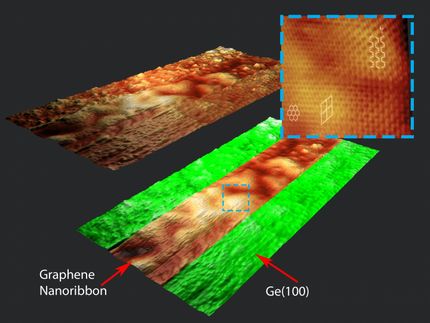Nano 'sandwich' offers unique properties
rice University researchers have modeled a nanoscale sandwich, the first in what they hope will become a molecular deli for materials scientists.
Their recipe puts two slices of atom-thick graphene around nanoclusters of magnesium oxide that give the super-strong, conductive material expanded optoelectronic properties.
Rice materials scientist Rouzbeh Shahsavari and his colleagues built computer simulations of the compound and found it would offer features suitable for sensitive molecular sensing, catalysis and bio-imaging. Their work could help researchers design a range of customizable hybrids of two- and three-dimensional structures with encapsulated molecules, Shahsavari said.
The scientists were inspired by experiments elsewhere in which various molecules were encapsulated using van der Waals forces to draw components together. The Rice-led study was the first to take a theoretical approach to defining the electronic and optical properties of one of those "made" samples, two-dimensional magnesium oxide in bilayer graphene, Shahsavari said.
"We knew if there was an experiment already performed, we would have a great reference point that would make it easier to verify our computations, thus allowing more reliable expansion of our computational results to identify performance trends beyond the reach of experiments," Shahsavari said.
Graphene on its own has no band gap - the characteristic that makes a material a semiconductor. But the hybrid does, and this band gap could be tunable, depending on the components, Shahsavari said. The enhanced optical properties are also tunable and useful, he said.
"We saw that while this single flake of magnesium oxide absorbed one kind of light emission, when it was trapped between two layers of graphene, it absorbed a wide spectrum. That could be an important mechanism for sensors," he said.
Shahsavari said his group's theory should be applicable to other two-dimensional materials, like hexagonal boron-nitride, and molecular fillings. "There is no single material that can solve all the technical problems of the world," he said. "It always comes down to making hybrid materials to synergize the best features of multiple components to do a specific job. My group is working on these hybrid materials by tweaking their components and structures to meet new challenges."
Original publication
Other news from the department science

Get the chemical industry in your inbox
From now on, don't miss a thing: Our newsletter for the chemical industry, analytics, lab technology and process engineering brings you up to date every Tuesday and Thursday. The latest industry news, product highlights and innovations - compact and easy to understand in your inbox. Researched by us so you don't have to.





























































